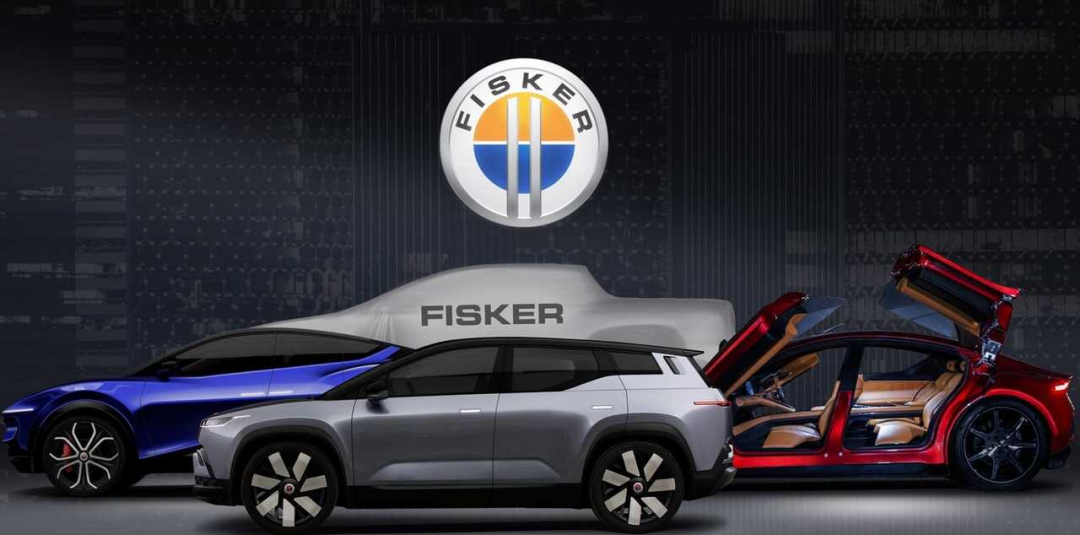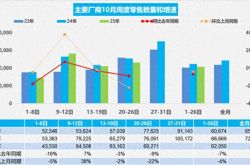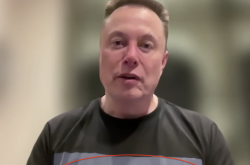From Valuation Mirage to Bankruptcy Liquidation: Fisker, Yet Another Crumbling Icon of the New Energy Bubble
![]() 09/05 2025
09/05 2025
![]() 562
562
In the summer of 2025, as the U.S. Bankruptcy Court in Delaware finally rubber-stamped Fisker's liquidation blueprint, this once-celebrated new energy vehicle (NEV) company officially closed the curtains on its fleeting existence. From the grand unveiling of the Ocean SUV in 2023 to its desperate plea for bankruptcy protection in 2024, and culminating in the abandonment of its headquarters in 2025, Fisker's downward spiral is not merely a tale of corporate failure but a stark revelation of the unbridled excesses lurking beneath the new energy industry's glossy veneer.

2023: Cracks Beneath the Glittering Facade, From 'Production Mirage' to 'Capital Crunch'
Henrik Fisker once adorned his eponymous vehicle company with a halo of design excellence. In 2023, the Ocean SUV, heralded as a game-changer poised to disrupt the traditional SUV market, rolled off the production line. Externally, it was hailed as the 'third force' alongside Tesla and Rivian. Yet, the speed at which this aura dissipated was staggering.
In July, Fisker first exposed its production capacity shortfall—a mere 1,022 Ocean SUVs rolled out in Q2, hundreds of units shy of the 1,400-1,700 target. This failure to meet production goals triggered an immediate capital chain alert. Three days later, the company scrambled to announce the issuance of $340 million in convertible bonds, netting $296.7 million, ostensibly to 'fuel growth in 2024 and beyond,' including battery production line expansions, capital expenditures, and future R&D. Unbeknownst to the outside world, this was merely the beginning of Fisker's financial juggling act.
By December, Fisker's predicament had worsened. To free up $300 million in working capital, the company slashed its full-year production target for 2023 to 10,000 units—a mere quarter of the 'optimistic expectation' from a year earlier. Behind this production cut lay a tangled web of supply chain mismanagement and latent product quality issues. Yet, amidst the new energy sector's fervor, these cracks went largely unnoticed.
2024: Comprehensive Crisis Unleashed, The Death Spiral of Safety Scandals and Capital Depletion
If 2023 was a year of simmering undercurrents, 2024 was Fisker's annus horribilis. From a barrage of safety issues to a complete capital chain breakdown, the company teetered on the brink of oblivion.
Safety Alarms at Full Blast: Four Investigations + One Recall, Trust Shattered
On January 15, the U.S. National Highway Traffic Safety Administration (NHTSA) took the first step—launching a safety probe into the Ocean SUV following 19 owner complaints (ranging from brake failure, gear shift malfunctions, doors that wouldn't open from the inside, to the terrifying scenario of hoods lifting unexpectedly at high speeds). Fisker, however, dismissed these as 'isolated incidents,' attempting to mask hardware flaws with software patches.
In February, the safety crisis escalated. On the 9th, reports surfaced of over 100 'sudden power loss' incidents since the Ocean SUV's delivery, accompanied by brake power failures, key fob malfunctions trapping owners inside/outside their vehicles, and seat sensor failures. On the 16th, the NHTSA launched a second investigation after four complaints of 'vehicles unexpectedly rolling away' (one incident resulting in injury).
Amidst unresolved safety hazards, Fisker's financial health deteriorated rapidly. On February 29, the company announced a 15% layoff and admitted that 'existing cash was insufficient to sustain operations for the next 12 months,' while planning a shift from a 'direct sales model' to a 'dealer model' in a desperate bid for survival. By this point, market confidence in Fisker had begun to erode.
In March, the crisis entered its 'final countdown.' On the 18th, Fisker suspended Ocean SUV production for six weeks, citing 'urgent fundraising needs.' Financial data revealed that as of March 15, the company's cash and cash equivalents stood at a mere $121 million, with $32 million restricted and unusable, while accounts payable soared to $182 million—raising serious doubts about its ability to continue operations.
To compound matters, on March 25, investment talks between Fisker and Nissan (the potential partner mentioned in reports) collapsed, jeopardizing its $150 million convertible bond financing plan. On the same day, the New York Stock Exchange suspended trading of Fisker's stock and initiated delisting procedures due to 'abnormally low share prices,' effectively shutting the door on the capital market.
Even more absurdly, on March 27, an insider revealed that due to 'lax internal processes,' Fisker had lost track of millions of dollars in customer payments (including deposits and even full payments), with some vehicles delivered without payment. This revelation laid bare the company's internal management chaos and tore apart the remaining 'veil of trust.'
From April to June, Fisker entered its 'bankruptcy countdown.' On April 29, another round of layoffs was initiated, and the company admitted in SEC filings that 'if financing couldn't be secured within 30 days, it would file for bankruptcy.' In May, due to inability to pay R&D fees, the cooperating engineering company halted the Pear (affordable electric vehicle) and Alaska (pickup truck) projects and was accused of 'illegal possession of intellectual property.' On May 10, the NHTSA launched a fourth investigation due to 'false triggering of the automatic emergency braking system.' On June 12, the Ocean SUV faced its first formal recall due to 'warning light font/color non-compliance with federal standards.'
On June 18, after a year-long struggle, Fisker officially filed for Chapter 11 bankruptcy protection, with financial reports showing assets of approximately $500 million to $1 billion and liabilities of $100 million to $500 million. In the bankruptcy statement, the company lightly mentioned that it would 'maintain streamlined operations while awaiting asset buyers,' but by this point, no one was biting.
Aftermath of Liquidation, From 'Zero Salaries' to 'Abandoned Headquarters'
Bankruptcy was not the endpoint but the beginning of Fisker's 'humiliation.' In 2025, the liquidation process of this vehicle company was rife with absurdity and helplessness.
In July, to conserve funds for the bankruptcy process, founder Henrik Fisker and his wife, co-founder Geeta Gupta-Fisker, announced a reduction in their annual salaries to $1, while delaying employee severance pay, healthcare benefits, and sales bonuses. However, this 'pathetic move' failed to garner sympathy—the bankruptcy regulatory agency under the U.S. Department of Justice (U.S. Trustee) directly opposed Fisker's asset sale plan, arguing that it 'damaged the interests of creditors.'

On July 16, the bankruptcy court finally approved Fisker's sale of 3,231 Ocean SUVs for $46.25 million, averaging about $14,000 per vehicle—less than a third of the original price, akin to a 'fire sale.' Yet, even this transaction was fraught with twists: in October, the buyer, American Lease, suddenly raised objections, claiming that Fisker couldn't complete the 'migration of vehicle data to non-Fisker servers' and threatened to terminate the deal, nearly shattering the creditors' 'last hope.'
Meanwhile, Fisker's 'mess' continued to fester. On October 4, the SEC (U.S. Securities and Exchange Commission) launched an investigation, accusing Fisker of 'possible violations of federal securities laws' and questioning its 'lack of a record-keeping plan.' On October 5, the landlord of the headquarters in La Palma, California, revealed that Fisker had left the premises in a 'complete mess' upon evacuation, with hazardous waste and full-scale vehicle oil sludge models strewn about, resembling a 'runaway' scenario. On October 7, the Department of Justice, representing the NHTSA, stated that Fisker's plan to 'make owners bear the recall labor costs' was 'illegal,' forcing the company to ultimately capitulate.
On October 16, after resolving a series of issues such as data migration and recall costs, the bankruptcy court finally confirmed Fisker's liquidation plan—in addition to the vehicles, approximately $1 billion worth of equipment left at its Austrian factory would also be sold by the trustee. Meanwhile, the 'charitable foundation' established by Henrik Fisker in 2021, which reportedly never donated more than $100,000, was quietly closed in 2025, becoming the final footnote to this debacle.
From Fisker's trajectory of decline, it is evident that the core reasons for its failure lie in using 'design halos' to mask 'manufacturing deficiencies' and relying on 'capital narratives' to fill 'operational voids.' As a vehicle company, it failed to address the fundamental issue of 'stable production capacity' or uphold the底线 (Chinese term meaning 'bottom line') of 'safety and reliability.' Instead, it attempted to 'circumvent obstacles' through frequent financing and model switching, ultimately collapsing under the triple crises of product, capital, and trust.
For the new energy industry, Fisker is not the first 'bubble specimen' and may not be the last. In the wave of 'electrification transformation,' the heat of capital can easily blind people to the essence that 'car manufacturing is a marathon, not a sprint'—without solid supply chain management, stringent quality control systems, and healthy cash flow, even the most alluring 'disruptive vision' will ultimately evaporate into thin air.
When Fisker's headquarters was abandoned, when the Ocean SUV was sold at a 'rock-bottom price,' and when the annual salaries of the founder couple were reduced to $1, this three-year new energy farce finally ended in the most embarrassing manner. What it leaves behind is not just a pile of unwanted assets but also a stark reminder: on the new energy track, only by 'keeping our feet on the ground' can we avoid being a 'flash in the pan.'








